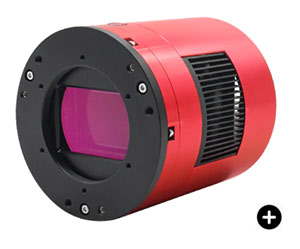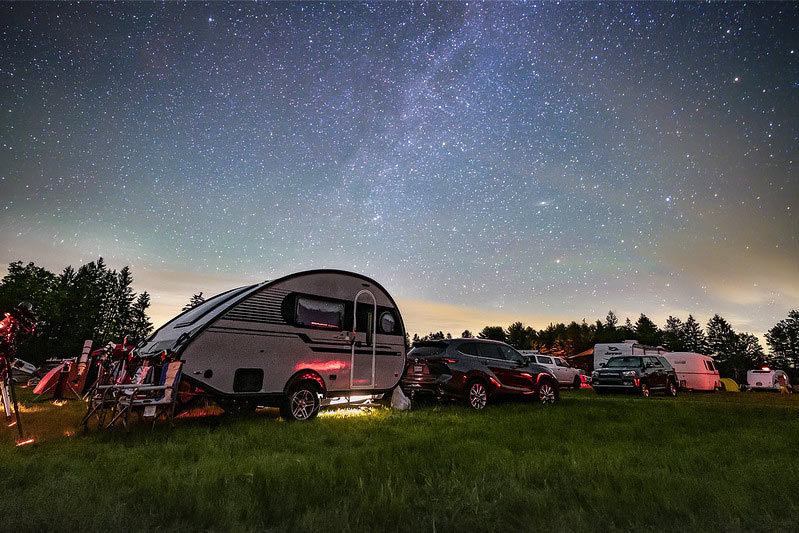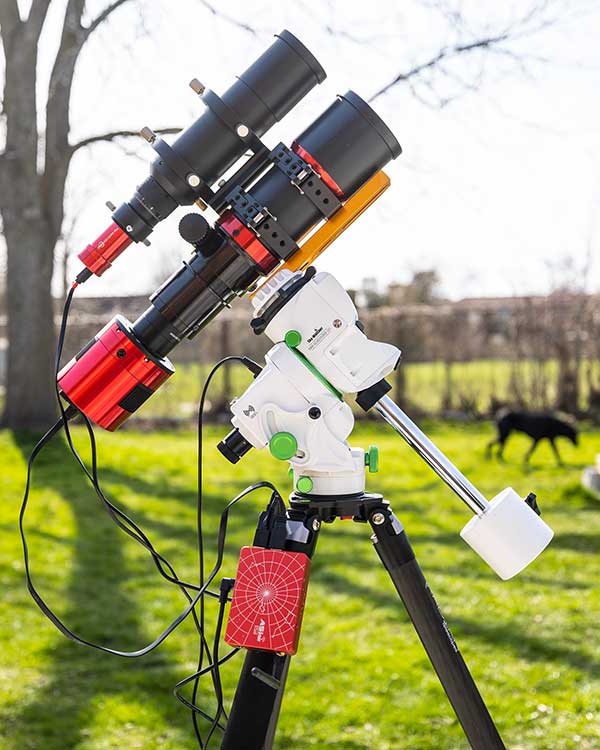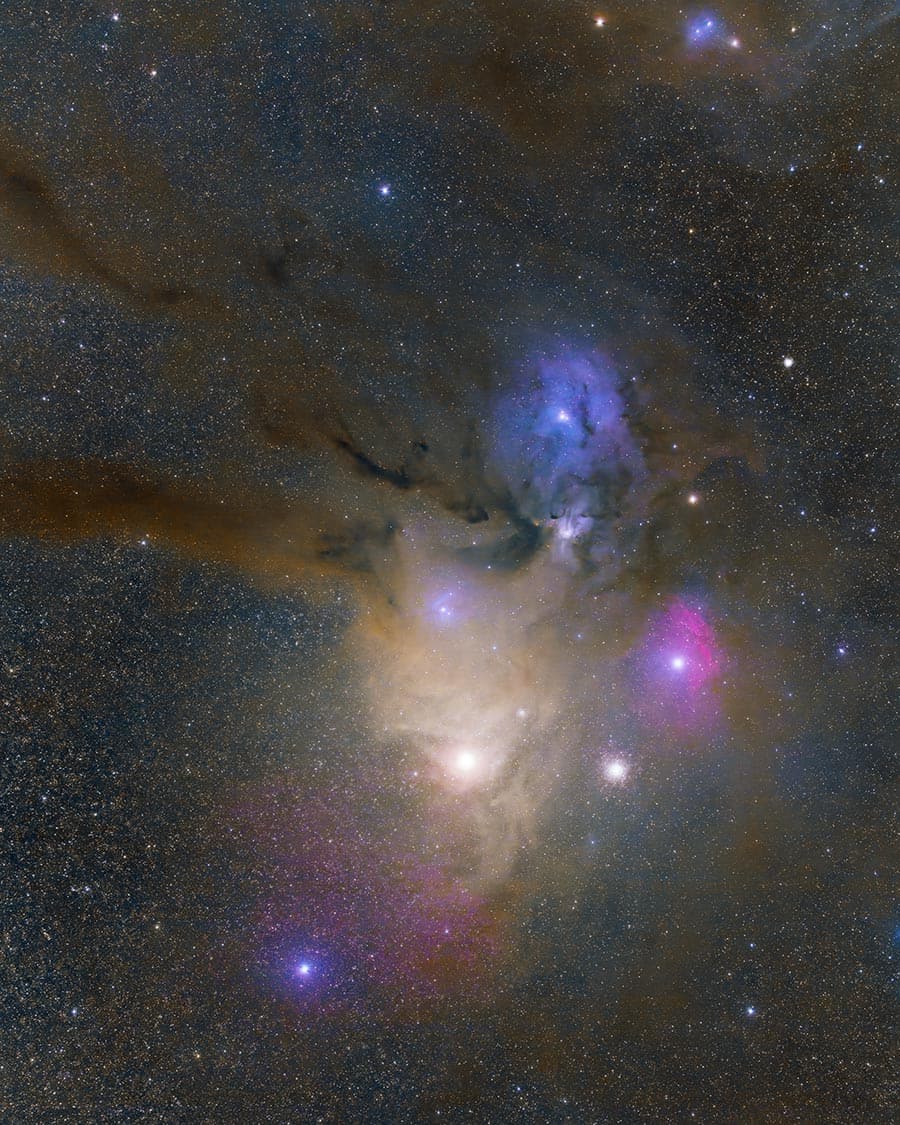Blue Horsehead Nebula
The Blue Horsehead Nebula (IC 4592) is a photogenic reflection nebula in the constellation Scorpius. In the northern hemisphere, it is a summer astrophotography target that lies close to the Rho Ophiuchi cloud complex.
After many years of admiring gorgeous images of this deep-sky target, I finally photographed the Blue Horsehead Nebula myself in the summer of 2022. To produce the image, I used a compact refractor telescope (Radian 61) riding on top of the Sky-Watcher Star Adventurer GTi.
The Blue Horsehead Nebula in Scorpius (90 x 90-seconds, ZWO ASI2400MC Pro)
Equipment Used:
- Camera: ZWO ASI2400MC Pro
- Telescope: Radian 61 Triplet APO
- Star Tracker: Sky-Watcher Star Adventurer GTi
- Guide Scope: William Optics 50mm Uniguide
- Guide Camera: ZWO ASI120MM Mini
- Camera Controller: ZWO ASIAIR Plus
The camera used for my photo of the Blue Horsehead Nebula in Scorpius.
This nebula is not to be confused with the other Horsehead Nebula, a winter deep-sky object in the constellation Orion. That object is a dark nebula, while the Blue Horsehead is a reflection nebula illuminated by the bright binary star, Nu Scorpii.
In visible light, all of the reflecting dust of the nebula appears blue and shares a striking resemblance to the shape of a horse’s head. Through long-exposure astrophotography, we can showcase this beautiful deep-sky nebula in greater detail.
A reflection nebula is made up of very fine dust that normally appears dark in space. This dust is reflected by the visible light of nearby, energetic stars. and looks quite blue through astrophotography.
Other famous reflection nebulae include the Iris Nebula, Ghost Nebula, and the Pleiades Star Cluster. Reflection Nebulae are some of my favorite deep-sky objects to photograph using a camera and telescope, even though they are usually a lot more work!
Blue Horsehead Nebula Details:
- Cataloged: IC 4592
- Common Name: The Blue Horsehead Nebula
- Constellation: Scorpius
- Object Type: Reflection Nebula
- Distance: 420 light-years away
- Best Time to See It: Late-May – Early-August
The Constellation Scorpius. IAU, Sky & Telescope.
How to find the Blue Horsehead Nebula
The Blue Horsehead Nebula is very difficult to locate visually through a telescope eyepiece. Very dark skies and patience are required.
However, using a camera and telescope, it is much easier to locate the Blue Horsehead Nebula by taking a few test exposures in the right area of the sky.
The Blue Horsehead Nebula is visible in the summer months in the northern hemisphere. In May, you should be able to start looking for this reflection nebula just after midnight.
By mid-June, this deep-sky target is well placed in the night sky right after dusk and is the best time to view and photograph it.
The location of the Blue Horsehead Nebula in Mid-June (Mid-Northern Latitudes). Image Created using Stellarium.
You’ll find this nebula by first looking for the bright orange star Antares in Scorpius. From here, star-hop North to the next bright star in Scorpius, Nu Scorpii (Jabbah), which is responsible for the reflected light in this nebula.
Photographing the Blue Horsehead Nebula
This is the type of nebula you’ll want to photograph from a dark sky location. Reflection nebulae that include areas of dark dust are difficult to reveal from a light-polluted sky.
That is not to say it’s impossible from the city, but the image processing stage of the project will take some serious time. A light pollution filter may restrict the amount of signal collected in the pivotal blue spectrum of light, so I would advise using only a simple UV/IR cut filter for this object.
Gradient extraction and achieving accurate colors will be much more difficult to achieve using data collected from the city. This is simply because the object is so faint, that it will be difficult to separate the areas of dim dust from a washed-out sky.
This particular object also lies rather low on the horizon from mid-northern latitudes, making it even more challenging from a backyard like mine.
The dark Bortle Scale class 2 skies (and low horizon) of Cherry Springs State Park in Pennsylvania was the perfect spot to finally capture this object.
Cherry Springs State Park at night.
I chose to shoot 90-second exposures with my color camera (ZWO ASI2400MC Pro), which may seem a little short. When shooting broadband color images without a filter, it is wise to dial back your exposure time to avoid clipping highlights and/or over-saturating the brightest areas of the image.
Any lack of signal can be overcome by piling up the overall exposure time. In this case, 2.5 hours was enough integration to process an impressive image. I am happy with the results using this system, and I think it’s a great example of what’s possible with this kit.
Astrophotography Equipment
The Blue Horsehead Nebula is a very large deep-sky target in the sky. Even a 500mm telescope is too narrow to capture the entire object in a single field of view.
I chose to use a wide-field imaging refractor telescope with a focal length of 275mm to capture the Blue Horsehead. Because of its size, many photos you’ll find online of this target were captured using a camera lens in place of a telescope.
If you’re capturing the Blue Horsehead Nebula with a telescope, it might require you to create a mosaic to reveal the entire object. The ASIAIR includes a handy mosaic tool to accomplish this, and many other astrophotography imaging software tools do too.
My star tracker setup for deep-sky astrophotography. Sky-Watcher Star Adventurer GTi, Radian 61, ZWO ASI2400MC Pro.
Final Thoughts
The Blue Horsehead Nebula is a more advanced astrophotography subject to capture. Unlike the brightest nebulae in the sky, this object is comparatively dim.
This means that a trip to a dark sky location is recommended, to capture the best possible images of this dim reflection nebula. However, you do not need a modified astrophotography camera to capture this nebula.
A simple DSLR camera and lens are more than capable of a great photo, with the right approach. Aim to capture the object at a focal length of 24-250mm, from a dark sky location. Some of the best examples I have seen of this object were taken with a Rokinon 135mm F/2 lens.
In the image below, the Blue Horsehead Nebula is just barely cut off at the top right of the image. With the right focal length, you can even capture an incredible image of Rho Ophuichi and the Blue Horsehead in a single image.
The Rho Ophiuchi Cloud Complex photographed a Rokinon 135mm F/2 lens | Nightsky_Ash







